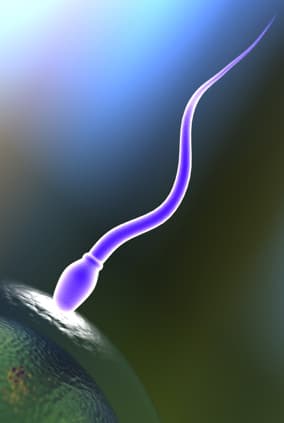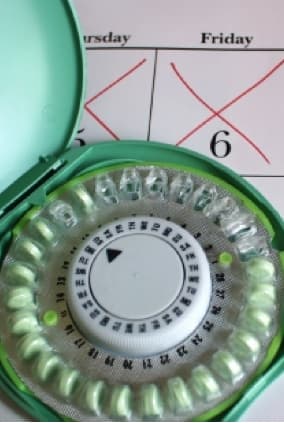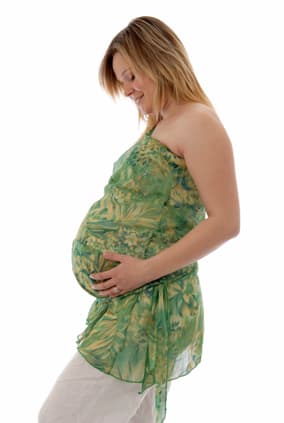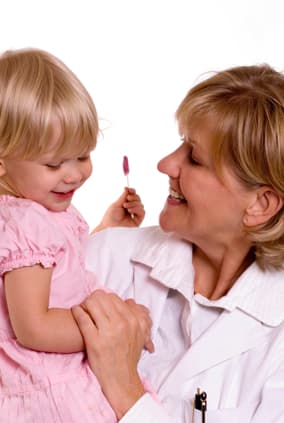INFERTILITY OVERVIEW
Infertility is often defined as not being able to get pregnant after trying for one year. Of the approximately 62 million women of reproductive age in 2002, about 1.2 million, or 2%, had an infertility-related medical appointment within the previous year, and 10% had an infertility-related medical visit at some point in the past. Additionally, 7% of married couples in which the woman was of reproductive age (2.1 million couples) reported that they had not used contraception for 12 months and the woman had not become pregnant (2002 National Survey of Family Growth).
Thus, for many people who want to start a family, the dream of having a child is not easily realized. Assisted Reproductive Technology (ART) has been used in the United States since 1981 to help women become pregnant, most commonly through the transfer of fertilized human eggs into a woman’s uterus. However, deciding whether to undergo this expensive and time-consuming treatment can be difficult.
At the Nature’s Intentions Naturopathic Clinic, we offer various natural approaches for improving fertility, hence helping you fulfill your dream of having a child. There are many avenues we can explore together, beginning with a better understanding of your hormonal cycles and a close examination of your individual concerns.
Treatment methods include:
- Constitutional Homeopathy
- Acupuncture and Traditional Chinese Medicine
- Botanicals
- Nutrition
- Gentle Detoxification
- Reiki Treatments
- Lifestyle counselling
Naturopathic medicine can help in cases of hormonal imbalances, irregular cycles, endometriosis, lack of ovulation due polycystic ovaries and decrease occurrence of miscarriages. It can also improve the success rates of in vitro fertilization (IVF) and intra uterine insemination (IUI).
In comparison to prices for IVF and IUI, the naturopathic route is much more affordable, and cheaper, and it not only improves your chances of getting pregnant, but also improves your overall health and well being.
People are often misled to believe that they are infertile. Let us first examine why this is so in the first place:
- Infertility is assumed if pregnancy has not occurred after one year of having unprotected sex. The standard wisdom is that assumption that it is a fertility problem when in fact there may not be any problem what so ever.
- Irregular cycles are assumed to be potentially problematic. The medical model is so entrenched in the concept of having a 28 day cycle with ovulation at Day 14, that anything outside of that is seen as problematic. If a couple is just taught how to identify approaching ovulation to time intercourse appropriately, then it is irrelevant whether it occurs on DAY 14, 19 OR DAY 25. If your cycle lengths vary dramatically you might want to see a naturopath to rule out hormonal or other possible conditions.
- The most obvious solutions are often over looked. Doctors are trained to identify disease and illness, often diagnosing and treating with the use of high-tech procedures. For example, the relationship between the frequency of intercourse and pregnancy. A couple may have sex twice a week for a year and wonder why they have not gotten pregnant.
A doctor would generally proceed with a fertility workup (using invasive and painful testing) on the assumption that the couple is infertile, without even considering whether the couple is having intercourse at the right time in the woman’s cycle. Its quite possible to be missing the fertile phase of each cycle even with having intercourse twice a week, especially if the woman only has a day or so of fertile cervical fluid, or the man’s sperm count is marginal. THIS IS NOT A FERTILITY BUT EDUCATION PROBLEM.
Before any of the high tech tests or treatments are employed, the man should have a semen analysis and the woman should ideally have a monthly saliva hormone check to understand when she is most fertile and to determine any possible impediments to pregnancy achievement.
- The focus is often basal body temperature rather than cervical fluid. The most important fertility sign for timing intercourse effectively is cervical mucus. Physicians often encourage timing intercourse for either a drop or rise in temperature; this is not only misleading but can actually impede pregnancy achievement. By the time the temperature shifts, the egg is typically already dead and gone. However its measurement is still very important to determine if she is ovulating at all, or whether the second phase is long enough for the egg to implant in the uterus or whether she has achieved pregnancy at that particular time.
- Timing of the fertility tests. Usually the postcoital test is performed on the 14TH day of the woman’s cycle, regardless of when she ovulates. The purpose of the test is to determine if the woman’s cervical fluid is conducive to sperm viability, and whether her partner’s own sperm will survive in it.
Unless the woman does ovulate close to that day, the test is usually invalid, and leads many couples to believe they have a fertility problem when they do not. Invasive tests such as endometrial biopsies and hysterosalpingograms should not be performed unless ovulatory and cervical problems have been ruled out, using simple charting methods and non invasive saliva testing at the appropriate times of the month.
Women are often needlessly prescribed the ovulatory drugs. Women are often put on ovulatory drugs when a couple is presumed to be infertile, whether she is ovulating or not. Recent studies suggest that this drug may increase the risk of ovarian cancer or tumours, if taken for a year or more. This drug stimulates egg development in the ovaries and has 2 paradoxical side effects: dry up the cervical fluid that is vital for sperm transport through the cervix and abnormally shorten the second phase of the cycle.
Sometimes the only way to remedy this is through intrauterine insemination.Women should ask their doctors why they think a prescription would be beneficial in their particular case, especially if they know that they are ovulating normally.
Ovulation predictor kits can be misleading. Many women are led to believe that they have a fertility problem if the kits do not show the expected color surge indicating ovulation is about to occur, when in fact there may not be any fertility issues.
Women are led to believe they are not getting pregnant when they are actually having miscarriages. There is a huge difference in terms of the fertility of a woman who has never achieved pregnancy and one who gets pregnant and then miscarries.
Miscarriages are often difficult to diagnose since they often happen so early in the woman’s cycle, they may be mistaken for her menstrual cycle. Ideally a woman should know when exactly the pregnancy has occurred through charting and understanding her hormone profile before she bled. Many women may then avoid being tested invasively needlessly to rule out an infertility problem that does not exist.
Related Articles
Acne
Acne is a common skin condition with a prevalence of 80% in female and 90% in male teenagers. It is caused by a disorder of the oil glands that result in clogged pores and outbreaks of lesions commonly known as pimples. Risk factors: poor diet, excessive sugar, trans fats and processed foods.
Candidiasis
Candida overgrowth in the gastrointestinal tract is now becoming recognized as a complex medical syndrome known as chronic candidiasis or the yeast syndrome. Symptoms include: Multiple food allergies, or allergic to all foods( pan allergic), alternating diarrhea with constipation.
Chronic Fatigue
Chronic Fatigue Syndrome (CFS) is described as a severe, debilitating fatigue, lasting at least six months (of new and definite onset), associated with at least four of the following symptoms: impaired memory or concentration, sore throat, muscle pains, joint pains, unrefreshing sleep and post-exertion malaise.
Irritable Bowel Syndrome
Irritable bowel syndrome (IBS) - a diagnosis of exclusion, this condition is often misdiagnosed. Severe food intolerances / allergies may exhibit symptoms that are similar to Irritable Bowel Syndrome such as pain, cramping, gassiness, sudden bouts of diarrhoea, and constipation.







